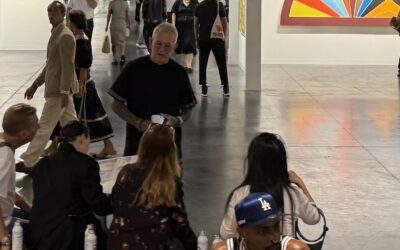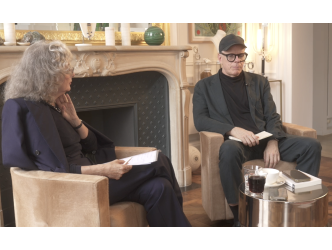The critique of criticism
If art criticism consists in judging the work of artists, then AI criticism consists in examining the harm done by machines that appear to be creative. In Paris, the Jeu de Paume is presenting one such critique—made by artists—of artificial intelligence. It’s the first time such a substantial effort has been undertaken anywhere in the world. At a time when this new technology’s superpowers are dazzling the world, the exhibition offers a valuable wake-up call.
More political than aesthetic
Yet it must be said that “The World According to AI”(“Le monde selon l’IA”)—as it’s titled—is distinctly austere in tone: clearly a political gesture more than an aesthetic one. On view are diagrams, photographs, installations and many videos by 40 visual artists. The most pleasing and accessible side of AI is deliberately excluded. None of the hypnotic, ever-shifting colorful animations popularized by Turkish-born, Los Angeles-based artist Refik Anadol are to be found here (See here and here reports about Refik Anadol).
Antonio Somaini
According to art historian and curator Antonio Somaini, the aim is to present a spectrum of artistic visions shaped by this young and invasive technology. “We are working on subjects that are still emerging,” he explains. “And yet our era shares many similarities with the 1920s, the exact moment when photography and cinema were becoming democratized.”
The click workers
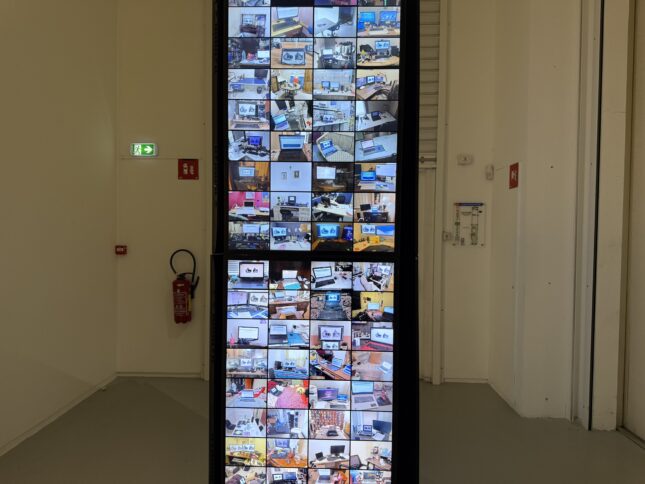
Meta Office
In truth, the exhibition can only offer a partial snapshot reflecting the curator’s own perspective, since artistic creation on the topic is still in its infancy. One of the exhibition’s most striking subjects is that of “click workers.” The Amsterdam collective Meta Office has explored the private lives of these invisible workers scattered across the globe, performing monotonous tasks from their homes: mimicking chatbot activity, moderating content for major companies. Meta Office asked these persons to send photos of their work environments. The resulting video column—a collage of cluttered bedrooms and makeshift workstations—quietly restores the human faces behind the machines.
Hito Steyerl

Hito Steyerl
German artist Hito Steyerl (born in 1966) created a giant video projection telling the story of Kurdish refugees living in camps who are forced into clickwork that sometimes includes operating Turkish drones—drones that, as Somaini grimly notes, might be turned against other Kurds.
Egor Kraft
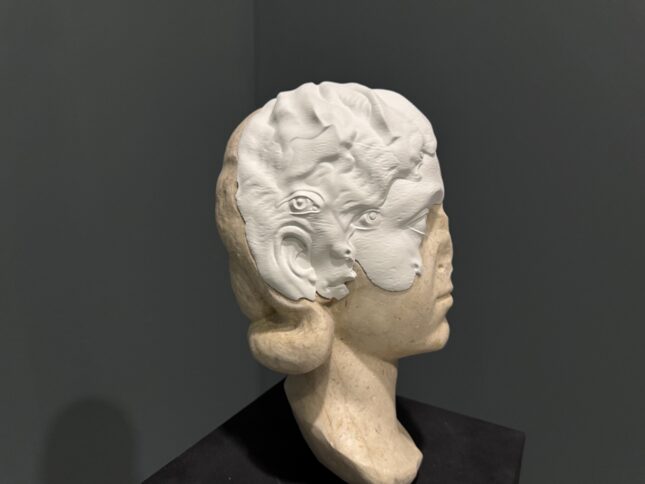
Egor Kraft
Artificial intelligence, the exhibition suggests, also scrambles our relationship with space and time. Russian artist Egor Kraft (born in 1986, based in Tokyo, Berlin and Vienna) explores how this AI damages the practice of archaeology, when it invents impossible forms to “repair” incomplete ancient artifacts.
Christian Marclay
The most famous artist featured in the exhibition is American Christian Marclay (born in 1955) (See here a report about his retrospective at Centre Pompidou). In 2018, he collaborated with Snapchat to create a piano that, when a key is pressed, triggers an image drawn from the social network paired with a precise sound frequency. A playful film of our cacophonous contemporary lives.
Gregory Chantonsky
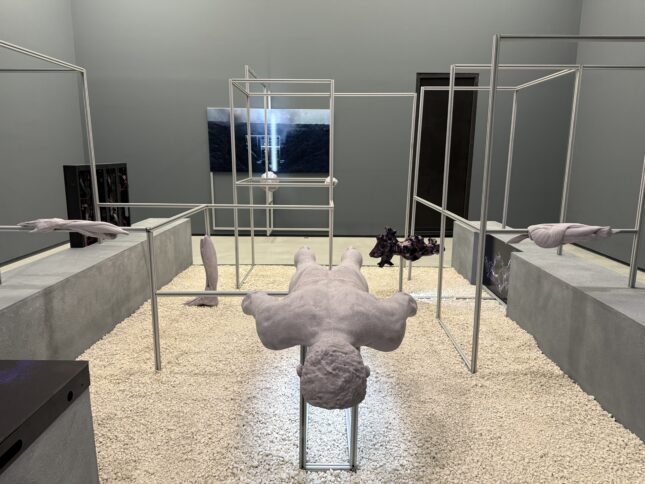
Grégory Chantonsky
The pinnacle of this dystopian narrative comes from Franco-Canadian artist Gregory Chatonsky (born in 1971), whose highly stylized installation imagines a post-apocalyptic world where AI, left to its own devices, generates an infinite number of new “artists” based on harvested data. A virtual resurrection of a messianic artist—but careful! The robots would be at the helm.
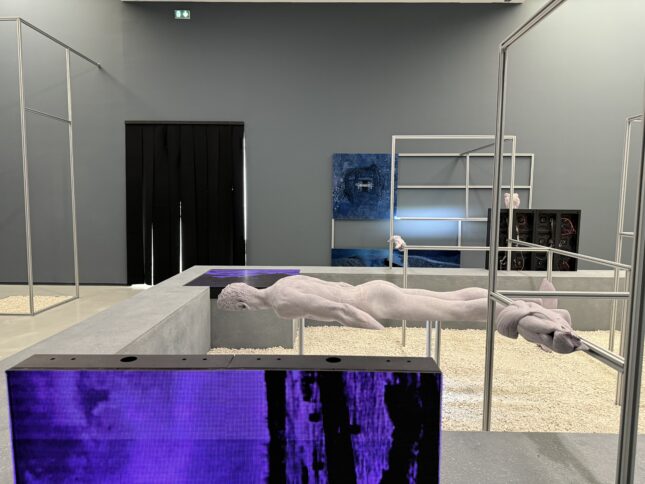
Grégory Chantonsky
The World According to AI. Through September 21. https://jeudepaume.org/
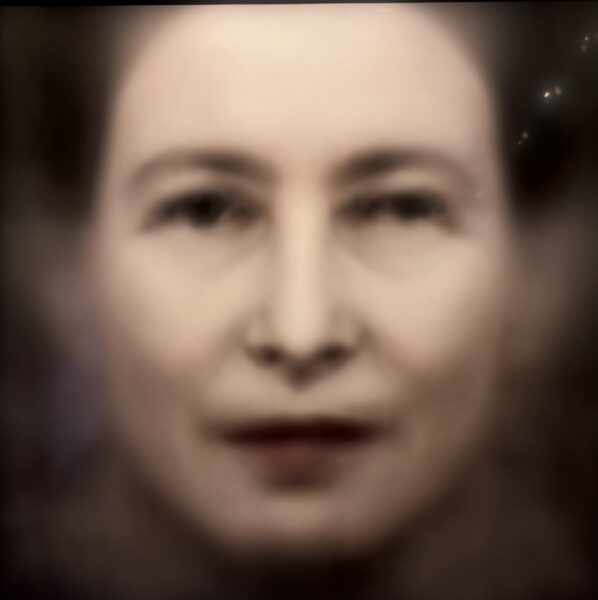
Trevor Paglen
Support independent news on art.
Your contribution : Make a monthly commitment to support JB Reports or a one-off contribution as and when you feel like it. Choose the option that suits you best.
Need to cancel a recurring donation? Please go here.
The donation is considered to be a subscription for a fee set by the donor and for a duration also set by the donor.



